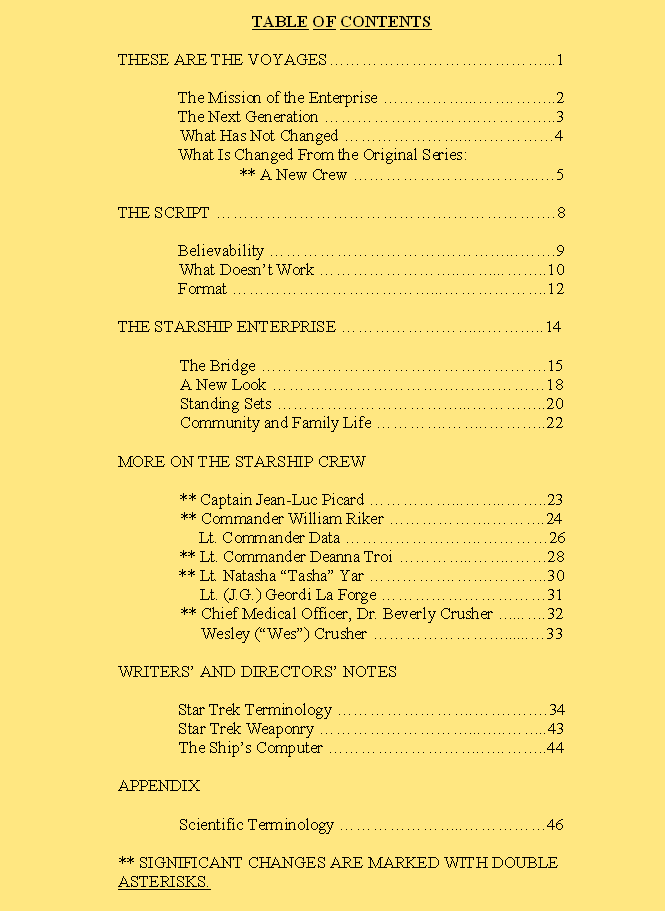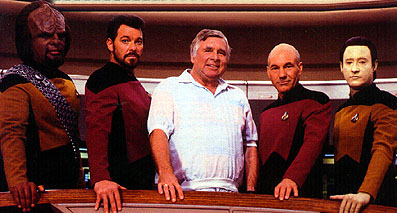
|
At the end of the shows seven-year run, it briefly held the record for the longest-running American live-action science fiction television series. It’s run was soon tied by its spin-offs “Star Trek—Deep Space Nine” and “Star Trek Voyager”. In 2002, the record was beaten by “X-Files”, which would go on to nine seasons.
During it’s first season, Star Trek: The Next Generation was hailed as the highest-rated syndicated one-hour drama on television… with the caveat that it was also the only syndicated one-hour drama on television.
The two-hour pilot episode, “Encounter at Farpoint,” began principal photography on May 29, 1987.
Leonard Nimoy had said in 1986 that any attempt to capture the success of the original Star Trek would be like “trying to capture lightning in a bottle.”
"Star Trek: The Next Generation" has made over $500,000,000 in syndication and merchandising
According to a November 1992 issue of "California Business" article, Paramount's annual first-run TNG gross advertising revenues are about $90 million, with production costs in the $31.2-$36.4 million range. Net annual advertising profits are between $30 and $60 million, without even counting the $70 million+ in licensing and affiliate station fees. TNG airs in 217 markets, with a 99% national coverage. Weekly viewership is in the 20 million range, bring in the most desirable of demographics. That "Star Trek: The Next Generation" is on the list of shows endorsed by the Viewers for Quality Television. Other VQT endorsed shows include "Cheers", "Designing Women", "LA Law", "Life Goes On", "Murphy Brown", "Northern Exposure", "The Trials Of Rosie O'Neill", "Law & Order", "Quantum Leap", "60 Minutes", "China Beach", "thirtysomething", and "Beauty and the Beast". |
 |
 |
 |
 |
